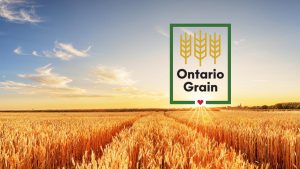The opportunity for corn
MARKET INTELLIGENCE

2020 WAS CERTAINLY a tumultuous year for corn farmers in Ontario. Nobody could have foreseen the market upset that COVID-19 had on grain markets in early 2020. As we look forward into 2021 and beyond, COVID-19 is still with us and affecting everything. However, both farmers and the corn market have adjusted to new realities. 2021 will represent a time of regrouping and recalibrating for corn market opportunities.
Corn prices as of November 2020 have advanced approximately a dollar or more since June 2020. Corn at $5 plus in Ontario is a number that often triggers farmer sales. As of early November, the price of corn is approximately $5.50 per bushel, the highest of 2020 at a time when usually it should be at its lowest. Corn market nuance is unusually unseasonable as we head into 2021.
UNUSUAL EVENTS
We got here in an unusual way. When the COVID-19 lockdown hit in early March 2020, grain markets responded by going down. In fact, at a time when corn markets usually show good new crop forward pricing like in June 2020, corn prices actually bottomed out for the year. For instance, on June 28, 2020, December 2020 corn bottomed out at $3.22 a bushel; while on November 10, it topped out at $4.27. Where in June and July the crop was seen as huge and demand as moribund, it all turned around as summer grew longer and fall commenced. Corn followed soybean prices, which surged on renewed Chinese demand and reduced Brazilian supplies.
This happened in a corn market where the fundamentals were solid. The corn crop in the U.S. is a big one, with 92 million acres planted with a total production of 14.507 billion bushels projected based on an average yield of 175.8 bushels per acre based on the November 2020 United States Department of Agriculture (USDA) report. These numbers were a big reduction over its October 2020 numbers. Ending corn stocks for 2020 – 2021 were estimated to be 1.702 billion bushels, a big reduction of 465 million bushels from the October report. Exports in the November report were boosted to 2.65 billion bushels, which is shaping up as a record high.
In Ontario, according to Statistics Canada, we planted 2.2 million acres of corn in 2020. That statistic is always interesting, but it doesn’t change much over time. In fact, those 2.2 million corn acres are very different from each other. Corn is grown from Windsor in the west to the Quebec border, some acres into northern Ontario and even in the Rainy River district which borders on Manitoba. Over this expanse, corn market conditions differ markedly, and Ontario basis levels reflect that.
BASIS
Corn farmers, wherever they farm in Ontario, need to have a good understanding of what their corn basis is. Basis is the value added or subtracted from the appropriate corn futures month, which determines when corn is bought or sold. Corn basis tends to be higher as you move East and North in Ontario toward the Quebec border. Ontario consumes most of the corn produced here in ethanol, feed, and food markets.
However, there are always some imports from the U.S., depending on basis levels. The U.S. corn replacement price is the litmus test. As long as the local price remains lower than that, corn is unlikely to be imported. On the contrary, increasingly we see consistent Ontario corn exports to Europe depending on bids and our access under the Canada-European Union Comprehensive Economic and Trade Agreement (CETA) to the European market.
What will the price of corn be in the fall of 2021 in Ontario? Nobody will ever know the answer to that question until we get there. However, it is important to immerse yourself in market factors on the way. At the time of this writing (November 2020), December 2021 corn futures were over the $4 level ($4.05). This does present one of the best opportunities to price new crop corn versus past years. That is a starting point. Needless to say, as prices have increased, you can almost feel the pressure of a lot more corn acres in the U.S. next year.
Will 2021 see American corn acres increase from the 91 million acres planted last year? Or will American farmers plant more soybeans based on the advantage apparent at the present time with even higher soybean prices? Will we get back to more traditional new crop corn pricing opportunities for 2021, which often occur in June of the same year? These are just some of the questions that corn farmers need to answer as they make their crop and corn marketing plans this year.
The key to future corn marketing opportunities going into 2021 will be daily market intelligence. Immersing yourself in the many factors which will affect the 2021 corn prices will help make better decisions. Geopolitics will continue to matter as corn is grown in far off places such as the Ukraine and Brazil, which often compete against Ontario corn in European markets. The challenge for Ontario farmers is to measure all of these market factors looking ahead into 2021. There will be many corn marketing opportunities ahead.
Philip Shaw is a farmer near Dresden and the author of Grain Farmers of Ontario’s Market Trends Report published 14 times per year (available at www.gfo.ca/graintalk). •






















